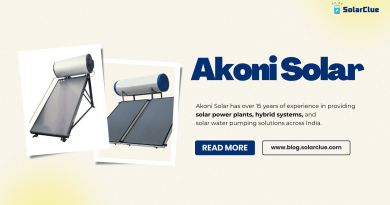How Many Solar Panels To Run A Pool Pump
Powering a pool pump with solar panels is an efficient and eco-friendly solution, but determining the optimal number of panels requires careful consideration of several factors. This blog will help you understand the variables that influence solar panel requirements, such as pump wattage, sunlight availability, and desired operating hours. We’ll also provide calculations, examples, and insights into the role of battery storage for nighttime operation.
Table of Contents
- 1 Understanding Pool Pump Power Consumption
- 1.1 Calculating Solar Panel Wattage Based on Pump Requirements
- 1.2 Optimizing Panel Placement for Maximum Sunlight Exposure
- 1.3 The Role of Battery Storage in Powering Pool Pumps
- 1.4 Considering Location and Climate Factors
- 1.5 Balancing System Size with Energy Needs and Budget
- 1.6 The Impact of Inverter Efficiency on System Performance
- 1.7 Tools and Software for Solar Panel Sizing
- 1.8 Case Studies of Successful Solar-Powered Pool Pumps
- 1.9 Factors Influencing Solar Panel Requirements for Pool Pumps
- 1.10 Conclusion
- 1.11 FAQ Section
Understanding Pool Pump Power Consumption
Pool Pump Wattage:
- Definition: The wattage of a pool pump indicates its power consumption, typically measured in watts (W). Most pool pumps range from 500W to 2,000W, depending on the size and type.
- Example: A typical residential pool pump may consume around 1,200W.
Operating Hours:
- Daily Usage: The number of hours the pump operates each day impacts the total energy required. For example, running a pump for 8 hours daily will require more energy than running it for 4 hours.
Calculating Solar Panel Wattage Based on Pump Requirements
Basic Calculation:
- Formula: Number of Panels=Pump Wattage×Operating HoursPanel Wattage×Sunlight Hours
- Example: If you have a 1,200W pump running for 8 hours a day in an area with 5 peak sunlight hours, and each solar panel produces 300W:
- Energy Required: 1,200 W×8 h=9,600 Wh/day (or 9.6 kWh/day)1,200
- Number of Panels: 9,600 Wh/day300 W/panel×5 h=6.4 panels
- Rounded up: 7 panels would be needed.
Optimizing Panel Placement for Maximum Sunlight Exposure
Orientation and Tilt:
- South-facing: In the northern hemisphere, panels should ideally face south to maximize sunlight exposure.
- Optimal Tilt: The tilt angle should be close to your location’s latitude for year-round performance.
Avoiding Shading:
- Shading Impact: Even partial shading can significantly reduce the power output, so panels should be placed in a location free from obstructions like trees or buildings.
The Role of Battery Storage in Powering Pool Pumps
Storing Excess Energy:
- Battery Use: Batteries can store excess energy generated during peak sunlight hours, allowing the pump to operate during the night or on cloudy days.
- Sizing Batteries: The size of the battery depends on the pump’s energy needs and how long you need to run the pump without sunlight.
Example Calculation:
- Daily Energy Needs: If the pump requires 9.6 kWh/day, a battery system with at least 10 kWh capacity is recommended to cover overnight operation and ensure continuous pump function.
Considering Location and Climate Factors
Geographic Influence:
- Sunlight Hours: Locations with more peak sunlight hours require fewer panels to generate the same amount of energy.
- Seasonal Variations: In regions with significant seasonal changes, panel output will vary throughout the year, potentially requiring more panels to meet energy needs during the winter months.
Balancing System Size with Energy Needs and Budget
System Sizing:
- Cost vs. Need: Larger systems generate more power but come with higher upfront costs. Balancing the number of panels with your budget and energy needs is essential.
- Efficiency Trade-offs: Investing in higher efficiency panels might reduce the number needed, saving space and installation costs.
The Impact of Inverter Efficiency on System Performance
Inverter Efficiency:
- Conversion Losses: Inverters convert DC power from the panels to AC power for the pump. Inverter efficiency typically ranges from 90% to 98%.
- Calculation: If your inverter is 95% efficient, you should factor in a 5% energy loss when sizing your system.
Example:
- If your system needs to produce 9.6 kWh/day, and your inverter is 95% efficient: Adjusted Need=9.6 kWh0.95≈10.1 kWh/day. This would slightly increase the number of panels needed.
Tools and Software for Solar Panel Sizing
Solar Calculators:
- Online Tools: Various online calculators and software tools can help estimate the number of panels required based on location, pump wattage, and other factors.
Monitoring Systems:
- Performance Tracking: Monitoring systems can help track the performance of your solar setup and adjust the system as needed to optimize efficiency.
Case Studies of Successful Solar-Powered Pool Pumps
Example Project:
- Location: A residential pool in California with a 1,500W pump running 8 hours a day.
- System Design: The homeowner installed 8 monocrystalline panels (each 350W), coupled with a 10 kWh battery storage system.
- Outcome: The system meets daily energy needs year-round, with excess energy stored for nighttime use.
Factors Influencing Solar Panel Requirements for Pool Pumps
| Factor | Description | Impact on Solar Panel Requirements |
|---|---|---|
| Pool Pump Wattage | The power consumption of the pool pump, typically measured in watts (W) | Higher wattage pumps require more solar panels to meet energy needs |
| Sunlight Availability | Average daily sunlight hours at the installation site | More sunlight reduces the number of panels needed to generate sufficient power |
| Desired Operating Hours | The number of hours the pool pump needs to run each day | Longer operating hours increase the demand for solar energy |
| Battery Storage | Batteries store excess energy generated during the day for nighttime use | Battery storage allows the pump to run after sunset, reducing the need for oversized solar arrays |
| Panel Placement and Orientation | Positioning of solar panels to maximize exposure to sunlight | Optimal placement and orientation can increase panel efficiency and reduce the number of panels needed |
| Location and Climate | Geographic location and climate conditions affecting solar radiation | Locations with more sunlight require fewer panels |
| Inverter Efficiency | The efficiency of the inverter in converting DC to AC power | Higher efficiency inverters reduce energy losses, potentially reducing the number of panels required |
| Budget Considerations | The cost of the system relative to energy needs | Balancing the number of panels with budget constraints while meeting energy requirements |
Conclusion
Determining the optimal number of solar panels to power a pool pump involves careful consideration of factors like pump wattage, sunlight availability, and the desired operating hours. By calculating energy needs, optimizing panel placement, and considering the role of batteries and inverter efficiency, you can design a solar-powered pool pump system that meets your energy requirements efficiently and cost-effectively. This guide provides the tools and knowledge needed to make informed decisions and achieve a sustainable, solar-powered solution for your pool.
Here at SolarClue®, we offer a smart, practical, and “beautiful” solution. You will be answered for all the questions related to Solar.
We provide all kinds of brands that are the Best Solar panels in India.
If you are the one who is planning for the solar power system. Don’t hesitate to contact our team!
Looking forward to empowering you with solar energy, just like hundreds of our other clients!
FAQ Section
1. How do I determine the power consumption of my pool pump?
Check the pump’s label or manual for its wattage rating, which indicates its power consumption in watts. If the pump is rated in horsepower (HP), you can convert HP to watts (1 HP = 746 watts).
2. How do I calculate the number of solar panels needed to power my pool pump?
Use the formula: Number of Panels=Pump Wattage×Operating HoursPanel Wattage×Sunlight Hours. This will give you the number of solar panels needed based on your pump’s power consumption, operating hours, and available sunlight.
3. What role does battery storage play in powering a pool pump with solar panels?
Batteries store excess solar energy generated during the day, allowing the pump to operate during the night or on cloudy days, reducing the need for an oversized solar array.
4. How does location affect the number of solar panels required?
Locations with more sunlight hours require fewer panels to generate the same amount of energy. Seasonal variations in sunlight can also affect panel output.
5. Can inverter efficiency impact the number of solar panels needed?
Yes, if your inverter is less efficient, more panels may be needed to compensate for energy lost during the DC to AC conversion process.



